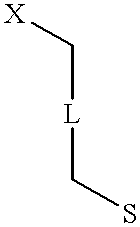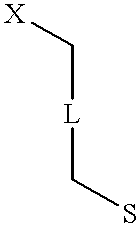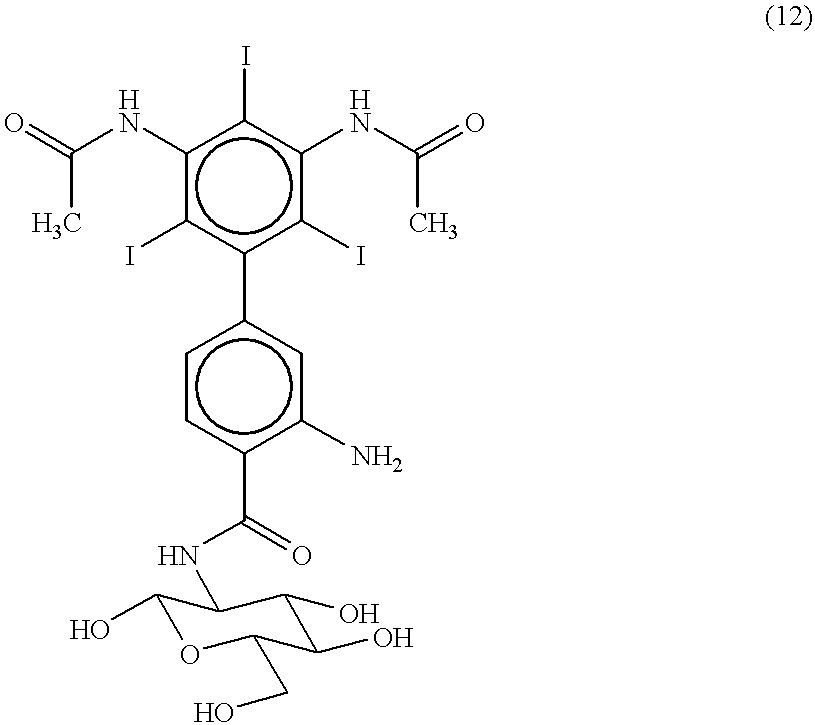Radiographic assessment of tissue after exposure to a compound
a tissue and radiographic technology, applied in the field of radiographic assessment of tissue after exposure to a compound, can solve the problems of inability to perform serial measurements on an individual animal during and after repeated administration of a test compound, and the approach to characterization of pharmacological activity has several significant limitations
- Summary
- Abstract
- Description
- Claims
- Application Information
AI Technical Summary
Benefits of technology
Problems solved by technology
Method used
Image
Examples
example 1
[0123] 2-Amino-4-[3',5'-bis(N-acetamido)-2',4',6'-triiodophenyl]-benzoyl-D--glucosamine (12) 3
[0124] The nitro groups of 2-chloro-1,3,5-trinitrobenzene (1) are reduced by reaction with tin and hydrochloric acid to yield 2-chloro-1,3,5-triaminobenzene (2).
[0125] The amino groups of 2-chloro-1,3,5-triaminobenzene (2) are acetylated by reaction with acetic anhydride to yield 2-chloro-1,3,5-triacetamidobenzene (3).
[0126] 2-chloro-1,3,5-triacetamidobenzene (3) is nitrated by reaction with a mixture of concentrated sulfuric and nitric acids to yield 2-chloro-1,3,5-triacetamido-3,5-dinitrobenzene (4).
[0127] 2-chloro-1,3,5-triacetamido-3,5-dinitrobenzene (4) is coupled with 4-iodotoluene by treatment with copper bronze at 200.degree. C. to yield 2',4',6'-triacetamido-3',5'-bis(nitro)-4-methylbiphenyl (5).
[0128] 2',4',6'-triacetamido-3',5'-bis(nitro)-4-methylbiphenyl (5) is treated with 6N hydrochloric acid to yield 2',4',6'-triamino-3',5'-bis(ni-tro)-4-methylbiphenyl (6).
[0129] The amino gr...
example 2
[0136] 2,6-Diamino4-[3',5'-bis(N-methylacetamido)-2',4',6'-triiodophenyl]--benzoyl-D-glucosamine (16) 6
[0137] 2',4',6'-triiodo-3',5'-bis(amino)-4-methylbiphenyl (8) is reacted with a mixture of nitric acid and sulfuric acid. Nitration under more vigorous conditions than those of Example 1 result in a product with a higher yield of nitro groups on both the 3- and 5-positions of the lower biphenyl ring. The product is treated with sodium cyanoborohydride and formaldehyde. The resulting product is treated with acetic anhydride to yield 2',4',6'-triiodo-3',5'-bis(N-methylacetamido)-3,5-dinitro-4-methylb-iphenyl (13).
[0138] The 4-methyl group of 2',4',6'-triiodo-3',5'-bis(N-methylacetamido)--3,5-dinitro-4-methylbiphenyl (13) is oxidized by reaction with potassium permanganate to yield 2',4',6'-triiodo-3',5'-bis(N-methylacetamido)-3,5-d-initrobiphenyl-4-carboxylic acid (14).
[0139] 2',4',6'-triiodo-3',5'-bis(N-methylacetamido)-3,5-dinitrobiphenyl-4--carboxylic acid (14) is coupled with 1,3...
example 3
[0142] 2-Amino-4-[3',5'-bis(2,3-dihydroxypropylmethylcarbamoyl)-2',4',6'-t-riiodophenyl]-benzoyl-D-glucosamine (20) 8
[0143] 2',4',6'-triiodo-3',5'-bis(amino)-4-methylbiphenyl (8) is reacted with a mixture of nitric acid and sulfuric acid. The product is treated with copper cyanide and sodium nitrite to yield 2',4',6'-triiodo-3',5'-bi-s(cyano)-3-nitro-4methylbiphenyl (17).
[0144] 2',4',6'-triiodo-3',5'-bis(cyano)-3-nitro-4-methylbiphenyl (17) is treated with sodium hydroxide. The product is treated with hydrochloric acid and methanol. The 4-methyl group of the product is oxidized by potassium permanganate to yield 2',4',6'-triiodo-3',5'-bis(carboxymethyl)--3-nitrobiphenyl-4-carboxylic acid (18).
[0145] 2',4',6'-triiodo-3',5'-bis(carboxymethyl)-3-nitrobiphenyl-4-carboxy-lic acid (18) is coupled with 1,3,4,6-tetra-O-acetyl-D-glucosamine in the presence of 1-[3-(dimethylamino)propyl]-3-ethylcarbodiimide hydrochloride and N-hydrosuccinamide to yield 2-nitro-4-[3',5'-bis(carboxy)-2',4',6'-t...
PUM
 Login to View More
Login to View More Abstract
Description
Claims
Application Information
 Login to View More
Login to View More - R&D
- Intellectual Property
- Life Sciences
- Materials
- Tech Scout
- Unparalleled Data Quality
- Higher Quality Content
- 60% Fewer Hallucinations
Browse by: Latest US Patents, China's latest patents, Technical Efficacy Thesaurus, Application Domain, Technology Topic, Popular Technical Reports.
© 2025 PatSnap. All rights reserved.Legal|Privacy policy|Modern Slavery Act Transparency Statement|Sitemap|About US| Contact US: help@patsnap.com



